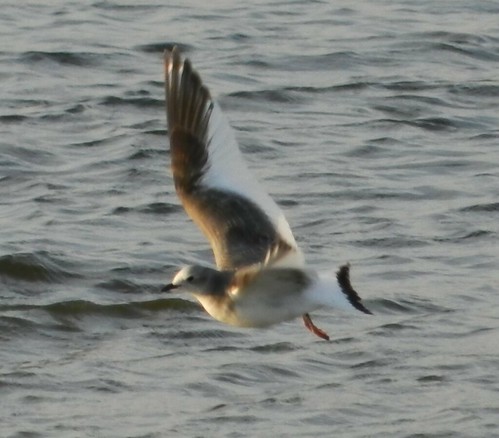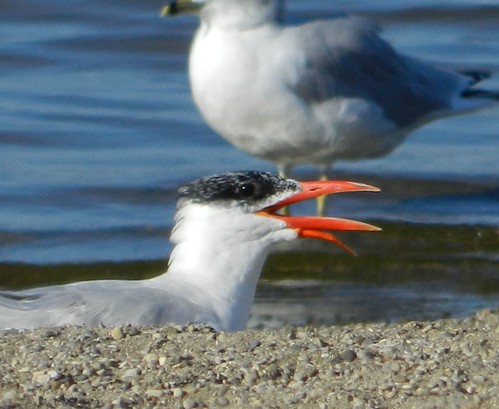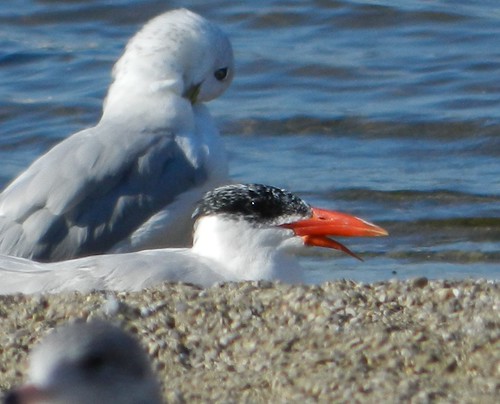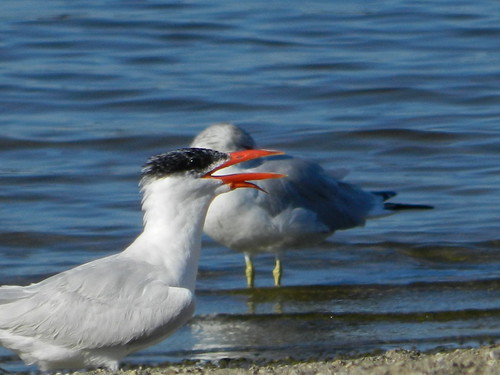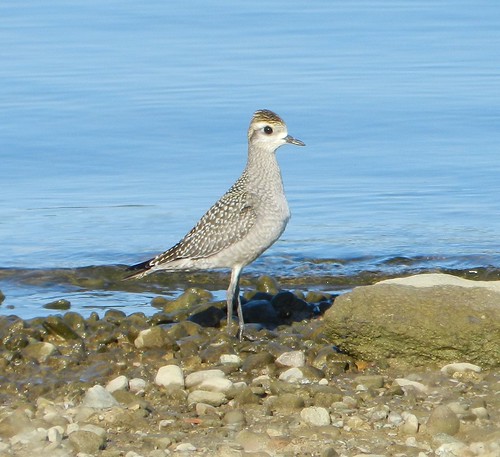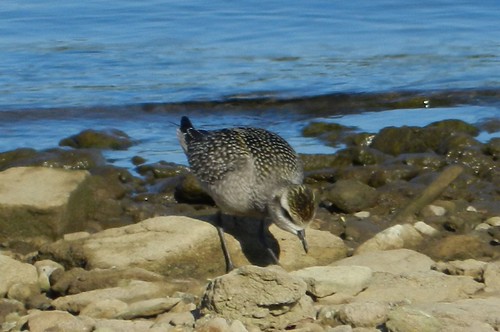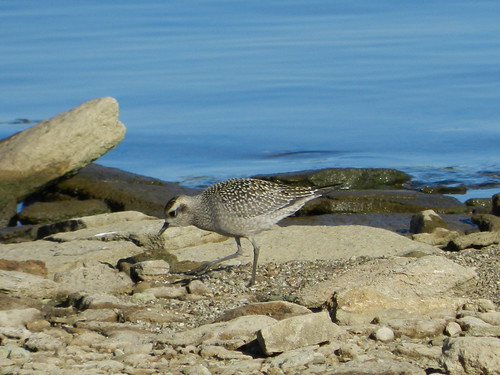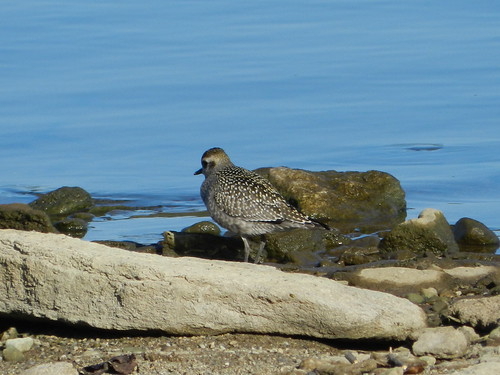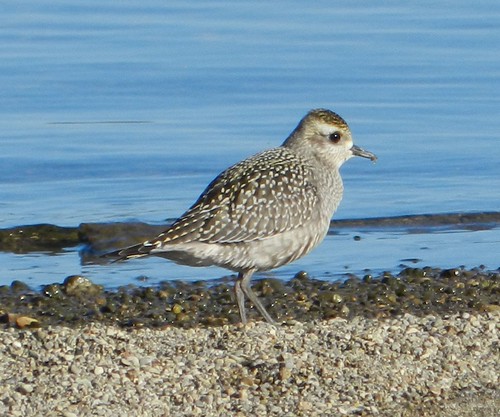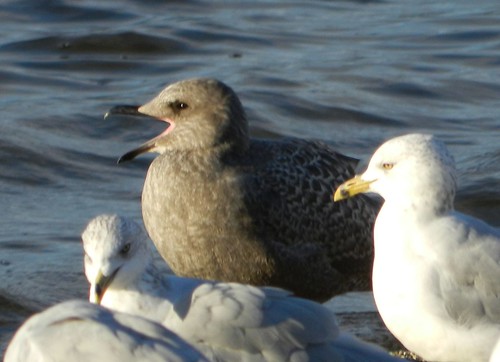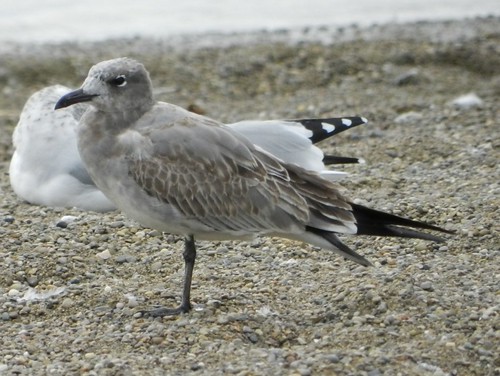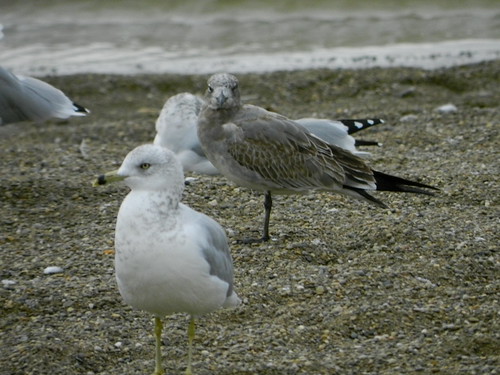 Starting this month and continuing on the 21st of each month, I will be writing for the blog Birding is Fun! as well as this blog. See you over there!
Starting this month and continuing on the 21st of each month, I will be writing for the blog Birding is Fun! as well as this blog. See you over there!Thursday, October 20, 2011
Birding is Fun! contributor
Tweet
 Starting this month and continuing on the 21st of each month, I will be writing for the blog Birding is Fun! as well as this blog. See you over there!
Starting this month and continuing on the 21st of each month, I will be writing for the blog Birding is Fun! as well as this blog. See you over there!
Tweet
 Starting this month and continuing on the 21st of each month, I will be writing for the blog Birding is Fun! as well as this blog. See you over there!
Starting this month and continuing on the 21st of each month, I will be writing for the blog Birding is Fun! as well as this blog. See you over there!Sunday, October 16, 2011
Sabine's Gull!
Tweet
Another Cincinnati area birder, Allan Claybon, photographed what appeared to be a juvenile Sabine's Gull at East Fork State Park on Saturday. I just saw the post on Sunday evening, so since I only live about ten minutes from that park, I headed out for a chance at this would-be life bird.
I got there about a couple hours before sunset and stayed till it started to get too crowded with people (sunset watchers I guess). I was there for about an hour and a half. I waited for about an hour by the resident gull flock for it to possibly fly in. I saw an adult Herring Gull fly in and land. I saw three Bonaparte's Gulls fly in including the one with three legs. Nothing else. More Ring-billed Gulls. and then, I saw something different looking coming in...
Juvenile Sabine's Gull!!
It flew in and landed on the water briefly, then proceeded to the beach to preen. There were people all around the gull flock, approaching it from both sides. I didn't expect the bird to stay long.
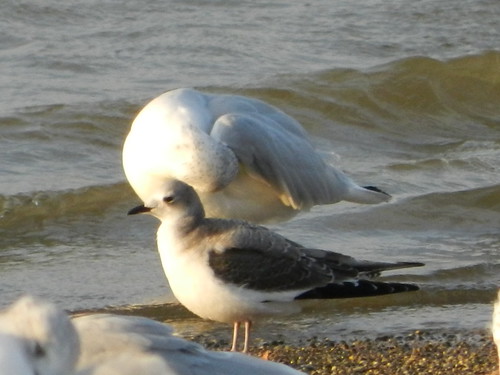
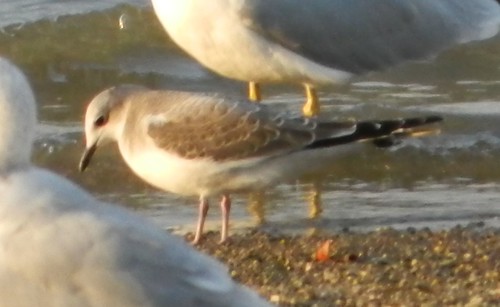
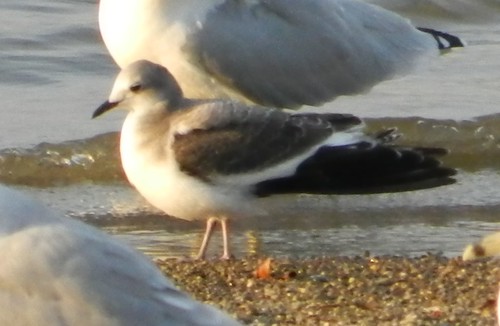
Tweet
I got there about a couple hours before sunset and stayed till it started to get too crowded with people (sunset watchers I guess). I was there for about an hour and a half. I waited for about an hour by the resident gull flock for it to possibly fly in. I saw an adult Herring Gull fly in and land. I saw three Bonaparte's Gulls fly in including the one with three legs. Nothing else. More Ring-billed Gulls. and then, I saw something different looking coming in...
It flew in and landed on the water briefly, then proceeded to the beach to preen. There were people all around the gull flock, approaching it from both sides. I didn't expect the bird to stay long.



The bird was very skittish and was constantly moving. It stayed on the beach for about three minutes before a couple of young men walked close to the flock. It took to wing, flying just off the beach. A young boy then threw a football into the flock, and the gulls scattered and put down on the lake for the night.
This bird looked contented enough to stay here for a little while. It is very skittish though, so lots of activity close to the gull flock will spook it. Hope it stays. Thanks Allan for this awesome find and lifebird!!
This bird looked contented enough to stay here for a little while. It is very skittish though, so lots of activity close to the gull flock will spook it. Hope it stays. Thanks Allan for this awesome find and lifebird!!
*****************
Tweet
Thursday, October 13, 2011
Book review: The Big Year (Movie tie-in Edition)
Tweet

The Big Year: A Tale of Nature, Man, and Fowl Obsession
While I have never competed in a big year myself, this book had brought back many good birding memories. I could relate with the characters in the book, as it made me feel like I was birding with them. It was also cool to read about a birder that I know, fellow Ohio birder Greg Miller!
This book will make you laugh regardless of whether you're a birder or not. While I doubt that many non-birders would pick this book up just as a causal read, I feel that they would be entertained enough to read it all the way through if they did. For those non-birders, you will see just how obsessed us birders are when it comes to seeing good birds.
As most of my readers probably already know, the book has now become a major motion picture!
Whether or not the movie is ornithologically correct or not, I feel that this movie will be a turning point for the future of birding and possibly (hopefully) bird conservation. I have had non-birding friends coming up to me asking what this movie is all about. This is the first time that birding has been in the national mainstream spotlight. That is a GOOD thing!
*Disclosure: I had received this book free of charge from the publisher for the purpose of reviewing. The opinions expressed are solely my own.
Tweet

The Big Year: A Tale of Nature, Man, and Fowl Obsession
By Mark Obmascik
In 1998, three birders consisting of Sandy Komito, Al Levatin, and Greg Miller decided to compete in a big year. A big year is where you compete to try to find as many species of birds as one can in the ABA area (mostly North America) in one year.While I have never competed in a big year myself, this book had brought back many good birding memories. I could relate with the characters in the book, as it made me feel like I was birding with them. It was also cool to read about a birder that I know, fellow Ohio birder Greg Miller!
This book will make you laugh regardless of whether you're a birder or not. While I doubt that many non-birders would pick this book up just as a causal read, I feel that they would be entertained enough to read it all the way through if they did. For those non-birders, you will see just how obsessed us birders are when it comes to seeing good birds.
As most of my readers probably already know, the book has now become a major motion picture!
Whether or not the movie is ornithologically correct or not, I feel that this movie will be a turning point for the future of birding and possibly (hopefully) bird conservation. I have had non-birding friends coming up to me asking what this movie is all about. This is the first time that birding has been in the national mainstream spotlight. That is a GOOD thing!
The Big Year will be opening in theaters everywhere October 14th!
Friday, October 07, 2011
A two-billed Caspian Tern!
Tweet
I swung by East Fork State Park to check the beach after work today to see if anything new had showed up. Many of the same birds reported from earlier in the day were still there. A Forster's Tern, four Caspian Terns and the juvenile American Golden Plover were still on the beach.
As I preceded closer to be able to see over a small ridge of sand, I noticed that one of the Caspian Terns looked odd. It appeared to have a deformed lower mandible at first. The bird walked closer to me and I was able to determine that it was a growth from beneath the lower mandible. It appeared to be a second bill. The growth was shorter than the lower mandible, so it did not appear to hinder feeding.
The bird behaved normally, with the exception that it would point its head to the ground (I see terns do this often) and plunge its bill in the sand for a few seconds. I always said that it looks like they have a carrot for a bill, but this one actually does!
Very odd! Any comments to the contributing biological causes/factors welcomed.
**Update to the deformed birds. Was talking to another birder, Allan Claybon, who was there earlier in the day yesterday. He photographed this Bonaparte's Gull with 3 legs and another Caspian with the same bill deformity. Weird stuff!
Tweet
As I preceded closer to be able to see over a small ridge of sand, I noticed that one of the Caspian Terns looked odd. It appeared to have a deformed lower mandible at first. The bird walked closer to me and I was able to determine that it was a growth from beneath the lower mandible. It appeared to be a second bill. The growth was shorter than the lower mandible, so it did not appear to hinder feeding.
The bird behaved normally, with the exception that it would point its head to the ground (I see terns do this often) and plunge its bill in the sand for a few seconds. I always said that it looks like they have a carrot for a bill, but this one actually does!
Very odd! Any comments to the contributing biological causes/factors welcomed.
**Update to the deformed birds. Was talking to another birder, Allan Claybon, who was there earlier in the day yesterday. He photographed this Bonaparte's Gull with 3 legs and another Caspian with the same bill deformity. Weird stuff!
Here is the link to his Flickr photos: http://www.flickr.com/photos/nsxbirder/6221946174/
*****************
Tweet
Tuesday, October 04, 2011
The life bird rule
Tweet
I have found another American Golden Plover this morning at East Fork. I was also able to show it to another birder that I have only talked to on the internet. Always love meeting online birding friends in the field!
This time, the bird is a juvenile. I love the pattern on the back of this bird. Tweet
Often times I wonder how one can go for years and not see a certain bird, and then once you have seen it, it seems that it is no longer hard to find. Well, that has happened to me again today.
I have found another American Golden Plover this morning at East Fork. I was also able to show it to another birder that I have only talked to on the internet. Always love meeting online birding friends in the field!
This time, the bird is a juvenile. I love the pattern on the back of this bird. Tweet
Monday, October 03, 2011
Not a gull to laugh at!
Tweet
For many years while I was starting out birding, I would simply pass over the gulls without paying much attention to them. I think I was intimidated by all the many ages and the possibility of encountering hybrids. As a challenge, I decided to get to know the common gulls that are regularly seen in my neck of the woods.
Many years later, I am still not where I would like to be in gull identification skills. However, I am glad that I took the time to try to master the local species. I find gulls fun birds to watch behavior wise, as they are always putting on a show in some way.
Here is my favorite of the gulls regularly seen around here, the Bonaparte's.
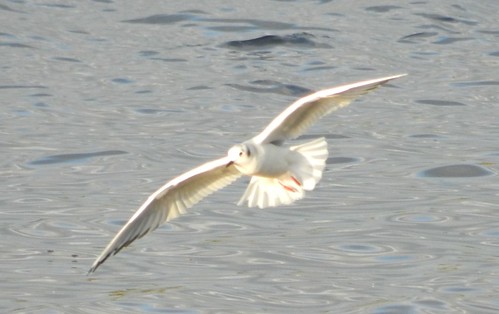
Tweet
Many years later, I am still not where I would like to be in gull identification skills. However, I am glad that I took the time to try to master the local species. I find gulls fun birds to watch behavior wise, as they are always putting on a show in some way.
Here is my favorite of the gulls regularly seen around here, the Bonaparte's.

But the local birding buzz has been from another gull species.
Subscribe to:
Comments (Atom)
